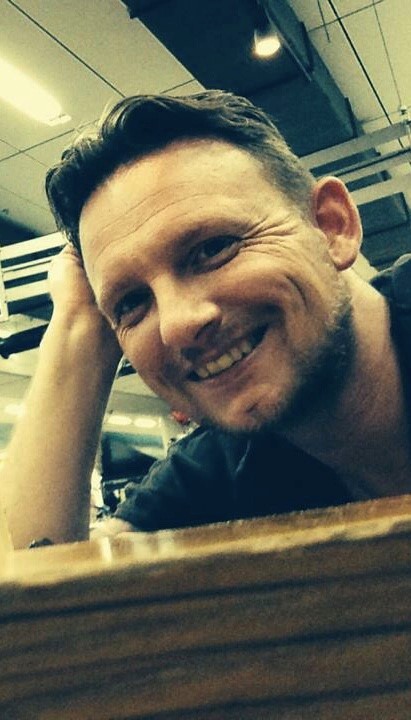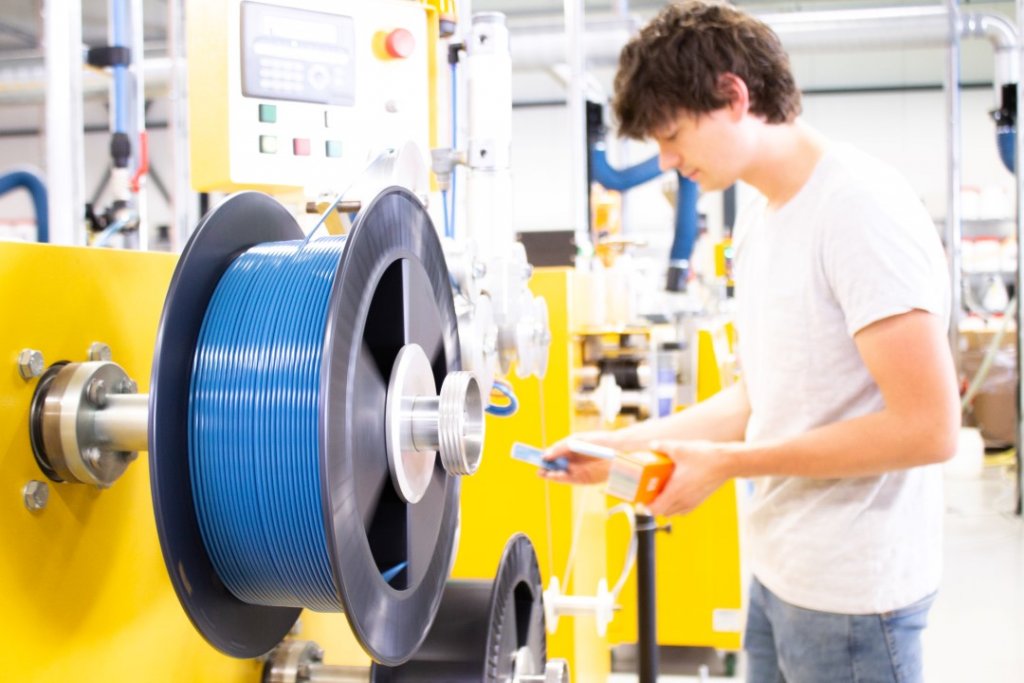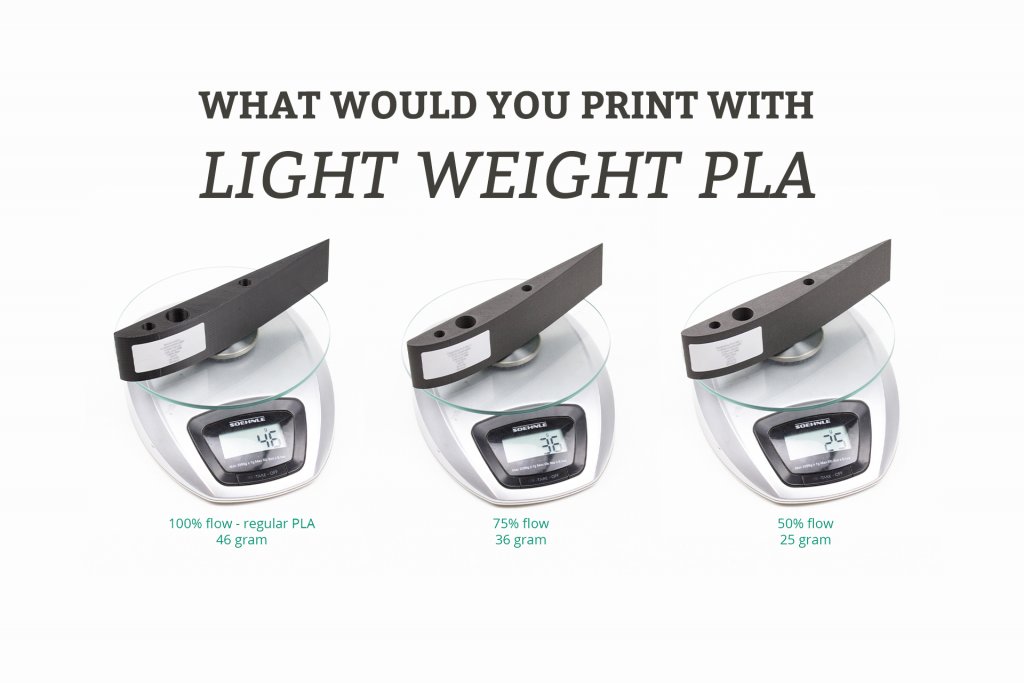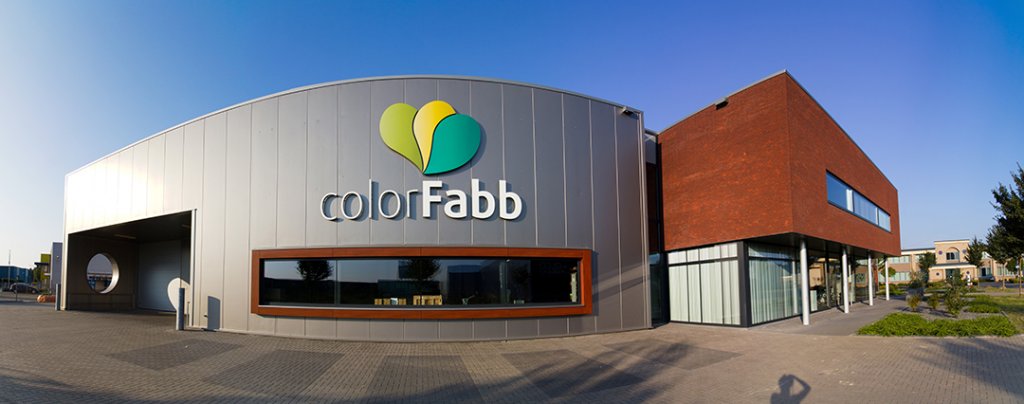A long long time ago Ralph and I were part of the super fun super crazy, hard-working rollercoaster that was Philips spinout Shapeways. Ralph was great to work with, a no-nonsense guy who got stuff done. He was supposed to do some IT stuff then did supply chain stuff and then web stuff and then was managing customer service and later on became the HR manager of the startup. It was hectic but Ralph was a rock during all of the crazy storms and constant scaling. I was happy to learn that after leaving 3D Printing for a while Ralph was back in the industry, working in business development for colorFabb. Dutch filament maker colorFabb is a real innovator in making new kinds of filament such as their metal filled filaments and their color on-demand technology. I really wanted to find out what Ralph was up to so we interviewed him.

What do people find difficult about 3D printing?
3D printing in general. What you can do but most importantly what you can’t do. A lot of people are still not familiar with the technique and what it can do for them. Those who are aware, have challenges in designing for the specific materials. We are still at the forefront of this new industrial revolution. In order to achieve mass adoption, we need to wait for software tools to get easier or for our mobile phones to get 3D cameras which will allow us to take a picture and have it converted into a 3D print file on the spot.
What has changed in 3D printing since you’ve gotten involved?
A lot actually especially in the ease of use. Desktop 3D printers have evolved a lot over the past years. The same goes for industrial printers. Tray sizes have increased, printing time reduced. We have also witnessed the rise of new materials (Carbon fiber, 18 karat gold, Porcelain, conductive materials, stainless steel and aluminum). All of this wasn’t possible or- widely available when I started in 2008. Besides this we have seen an increase in general awareness of what 3D printing is.

I can’t be the only one to have closely studied colorFabb’s spooling equipment to find out who their supplier was.
What is holding 3D printing back?
Simplicity, general knowledge, costs, accessibility and the learning curve. An easy way for people to make a 3D print file who are not familiar with 3D printing would help a lot. Right now you need to have technical knowledge before you can start printing. Although we see a decrease in costs it is sometimes still cheaper to buy, let’s say an iPhone case, instead of 3D printing it.
What common errors do you see?
Wrong expectations about what 3D printing can and can’t achieve. Design flaws. Models having thin walls, non-manifold issues etc. You will need to design your model specifically for the material you would like to have it in. Not having the correct printer settings for desktop printers is also a common mistake.
What are you excited about in 3D printing?
The future of it. Mass adoption. Other specific things such as the 3D printing of DNA strings excite me as well. Low costs customized prosthetics is another area. This 4th industrial revolution is going to be life-changing.
Why did you join colorFabb?
For several reasons actually. In the world of filaments colorFabb materials are considered to be the best ones when it comes to quality. colorFabb is in the forefront producing these new materials in house, which is awesome to be a part of. This in combination with the high energy environment, the awesome colleagues, the mission & vision of the company and the growth the company is going through, made it an easy decision.
What is colorFabb?
colorFabb was founded by Ruud Rouleaux, CEO of Helian Polymers in 2012. With extensive knowledge of the (bio)plastics industry, colorants and additives it was a logical next step for him to explore opportunities in the world of 3D printing. After rigorous testing and experimenting in the fall and winter of 2012 a new grade of PLA (PLA/PHA) was developed and it became commercially available in March 2013.
Later in 2013 the first special filament, woodFill, was launched. Half a year later a truly unique material was developed: bronzeFill, the first filament with actual bronze particles in it resulting in truly stunning prints when post-processed.
2014 also saw the expansion in production from one production line to four (currently 7), as well as the move to a new building. More important, colorFabb announced its joint development agreement with Eastman Chemical Company in September of that year, which has resulted so far in four grades of filaments, based on Eastman’s Amphora 3D Polymer range of materials.
Due to the rapid growth of the 3D printing market colorFabb has been expanding its production capacities, logistics department and team ever since the beginning. The colorFabb team consists of extrusion operators ensuring quality control, a logistics department that ships to over 100 countries worldwide every year, 3D print engineers who test all filaments and many more professionals. All of them dedicated to the quality and service the colorFabb brand is known for.
Why should I buy colorFabb filament?
colorFabb has established itself as a market leader through the release of innovative materials, high-quality production and strategic partnerships (Ninjatek, Stacker, Eastman, Covestro). We are often the first to bring new materials (Bronzefill and LW-PLA) and Color on Demand (RAL) where customers can purchase the RAL color they want and need in PLA as from one 750gram spool. colorFabb is unique in the world by offering this service.

What exciting new products are you offering?
Our latest release is called Light Weight -PLA. LW-PLA is the first filament of its kind using an active foaming technology to achieve lightweight, low-density PLA parts. At around 230C this material will start foaming, increasing its volume by nearly 3 times. Users can decrease material flow by 65% to achieve lightweight parts, or use the expanding properties to effectively reduce print time by using big layer heights or single extra thick perimeters.
Are you focusing more in the desktop or on the industrial market?
Both markets are not mutually exclusive. We see a wide adoption of FDM desktop printers in a lot of companies and industries looking for material solutions which colorFabb can offer.

Why did you move more into offering 3D printers also?
We feel that offering a complete package has added value. colorFabb as a company in focusing on these 3 pillars as their business model:
Materials (Filaments)
Hardware (3D printers)
Application center (Design/3D print services)
What is happening in the filament market?
More diversity and focus on functional filaments by an ever more demanding market.
Will PLA stay our most popular filament?
It is an easy to use filament that works on practically all printers. It will therefore remain the go-to filament for a lot of users. However, due to increasing demand for more functionality (which PLA lacks) there will be other contenders for the pro-users. It is hard to asses which material that will be. In general we are focusing on custom made filaments which can be used by our customers for all kind of purposes.
Will FDM switch to granulate?
Maybe for large scale models. For the desktop industry we don’t see the granulate replacing FDM because of the level of control needed over the flow of the material.
Subscribe to Our Email Newsletter
Stay up-to-date on all the latest news from the 3D printing industry and receive information and offers from third party vendors.
You May Also Like
Precision at the Microscale: UK Researchers Advance Medical Devices with BMF’s 3D Printing Tech
University of Nottingham researchers are using Boston Micro Fabrication‘s (BMF) 3D printing technology to develop medical devices that improve compatibility with human tissue. Funded by a UK grant, this project...
3D Printing Webinar and Event Roundup: April 21, 2024
It’s another busy week of webinars and events, starting with Hannover Messe in Germany and continuing with Metalcasting Congress, Chinaplas, TechBlick’s Innovation Festival, and more. Stratasys continues its advanced training...
3D Printing Webinar and Event Roundup: March 17, 2024
It’s another busy week of webinars and events, including SALMED 2024 and AM Forum in Berlin. Stratasys continues its in-person training and is offering two webinars, ASTM is holding a...
3D Printed Micro Antenna is 15% Smaller and 6X Lighter
Horizon Microtechnologies has achieved success in creating a high-frequency D-Band horn antenna through micro 3D printing. However, this achievement did not rely solely on 3D printing; it involved a combination...





























